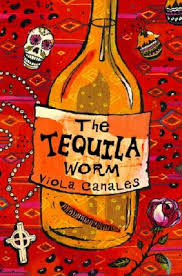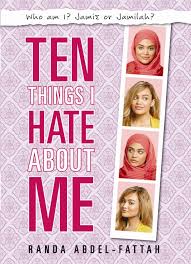
“‘On three conditions,’ Sal continued. ‘First…’ He held up his index finger. ‘You tell your creep friends here not to give me shit-ever again.’
Carlos felt his throat going dry. Didn’t Sal realize this was supposed to be a secret?
‘Second…’Sal added another finger. ‘It’ll cost you six bucks an hour plus expenses. Believe me, I’m letting you off cheap. Start by bringing twenty bucks tomorrow. And most important’-Sal flicked out a third finger-’you help start our school’s Gay-Straight Alliance.’
With the word ‘gay’ all eyes turned to Carlos. He cringed, wanting to crawl beneath the lunch table.
‘Now for your first lesson.’ Sal dabbed a finger across the corner of his own lips. ‘When you’re eating, wipe your mouth.’
Carlos is ashamed that he’s fifteen and still a virgin. In fact, he’s never even kissed a girl. To make matters worse, it seems like all his friends are hooking up, and he can’t even get super-hot Roxy to look at him. What is it? Is it his broken-out skin, or maybe his over-sized nose or undersized muscles? While channel-surfing when he can’t sleep, he flips to a show he’s never seen before: Queer Eye for the Straight Guy, a show where gay men give a sloppy straight man a makeover. And that’s when his master plan is born: all he needs to do is convince Sal, a classmate that everyone says is gay, to give him a makeover so he can win Roxy’s heart. However, Sal drives a hard bargain: in exchange for the help, Carlos has to agree to help start the school’s Gay-Straight Alliance. In order to do so, Carlos has to face his own prejudices and stand up for his new friend, which isn’t easy when you’re just a teenager trying to fit in.
This is my third book for the Colorado Teen Lit conference at the end of March, and it’s fantastic! Honestly, this is the book that got me excited enough to overcome my terror about having to stand up in front of my future colleagues and speak for an hour; it’s just so exciting and has such a good message that it’s an honor to present on it. I chose it because it, like the other conference books, isn’t focused on coming-out. In this story, Sal is out and supported by his family and close friends, and enjoys a healthy relationship with his boyfriend. In fact, Sal and his sweetheart are nearly the only example of a functional and loving relationship in the story. To make matters even more awesome, this book features minority characters, like Into the Beautiful North. I think both of them point to trends in publishing: more books about queer characters that aren’t only about coming-out, and more books featuring characters belonging to minority groups. It feels like the literature is opening its arms to teens of all kinds, and it’s pretty beautiful.
You will love this book because it’s very real: Carlos is angry, confused, struggles with his self-esteem and identity. His biggest worry is finding a girlfriend. Sometimes he’s an amazing friend, and at other times, he lets his friends down. In short, he’s written as though he were an actual teenage guy. Adding to the book’s appeal are the other realistic characters: Carlos’ pa, who sometimes comes off as hyper-masculine and insensitive, and Carlos’ friends, who are all mainly concerned with image and hooking up with girls. Also, in Sanchez’s world, there are gay characters, straight characters, and those who are in-between or even just not sure yet. It seems to me like all of the different relationships in the book explore different aspects of love and identity. Plus, it’s a fast, funny story that doesn’t get mired in cliches. I think you’re going to love it!
Alex Sanchez is a Lambda Literary award winner who has written several other well-received books, such as So Hard to Say, Rainbow Road and Boyfriends with Girlfriends. Getting It won the Meyer’s Outstanding Book Award, 2nd place in the Latino Book awards, and actually caused a public uproar when it was removed from the New York Public Library’s summer reading list. Patrons staged protests and succeeded in getting the book put back on the reading list. Awesome, right? I’m pretty sure Carlos would approve.
Happy Reading!
Sanchez, Alex. Getting It. New York: Simon & Schuster, 2006. 210 pp. Ages 15-18.
Author’s website: http://www.alexsanchez.com
If you liked this book, you might want to try Into the Beautiful North by Luis Alberto Urrea, or Will Grayson, Will Grayson by John
 “I wanted to play soccer on those beautiful playing fields. I wanted to get better at kicking with my head so I could go to college. I could get a good job and make enough money to buy a nice house for my parents and Lucy.
“I wanted to play soccer on those beautiful playing fields. I wanted to get better at kicking with my head so I could go to college. I could get a good job and make enough money to buy a nice house for my parents and Lucy.






